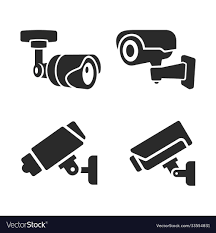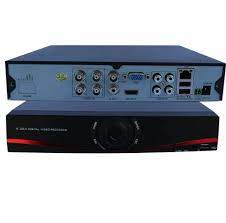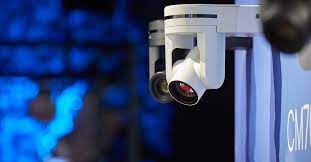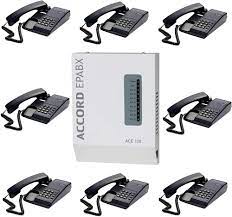Closed Circuit TV Cameras: Enhancing Security and Surveillance
Closed Circuit Television (CCTV) cameras have become an integral part of modern security systems, offering a wide range of benefits for both residential and commercial settings. These cameras provide a constant watchful eye, enhancing security and surveillance in various environments.
One of the key advantages of CCTV cameras is their ability to deter potential criminals. The presence of visible cameras acts as a powerful deterrent, significantly reducing the likelihood of theft, vandalism, or other criminal activities. Knowing that their actions are being recorded can make individuals think twice before engaging in illegal activities.
Moreover, CCTV cameras provide valuable evidence in the event of a crime. High-quality video footage captured by these cameras can be used by law enforcement agencies to identify criminals and aid in investigations. This evidence can be crucial for ensuring justice and holding perpetrators accountable for their actions.
In addition to deterring crime and providing evidence, CCTV cameras also help monitor activities within a premises. They enable real-time monitoring, allowing security personnel or property owners to keep an eye on multiple areas simultaneously. This is particularly useful for large establishments such as shopping malls, airports, or industrial sites where constant surveillance is necessary.
Furthermore, advanced features such as motion detection and facial recognition technology enhance the effectiveness of CCTV systems. Motion detection alerts operators whenever there is unusual movement within the camera’s field of view, helping them respond promptly to potential threats. Facial recognition technology allows for identification and tracking of individuals based on their facial features, which can be valuable in high-security areas or during investigations.
With advancements in technology, CCTV cameras now offer high-resolution video quality even in low-light conditions. This ensures that critical details are captured clearly regardless of the lighting situation. Additionally, remote access capabilities allow authorized personnel to monitor camera feeds from anywhere using smartphones or computers with internet connectivity.
It’s worth noting that privacy concerns related to CCTV systems should be addressed appropriately. Clear policies should be established regarding the use, storage, and access to recorded footage to ensure compliance with privacy laws and regulations. Transparency and communication with individuals within the monitored area are essential to maintain trust and respect privacy rights.
In conclusion, closed circuit TV cameras have revolutionized the way we approach security and surveillance. Their presence acts as a deterrent, provides crucial evidence in investigations, allows for real-time monitoring, and offers advanced features for enhanced security. By deploying CCTV cameras strategically, individuals and organizations can significantly improve safety levels and protect their assets. However, it is important to strike a balance between security needs and privacy concerns to ensure a responsible and ethical use of this technology.
Does CCTV Record When the TV is Off? Explained
3. Exploring the Different Types of Cameras Used in Closed-Circuit Television Systems
- What is closed circuit camera?
- Does CCTV record when TV is off?
- What are the different cameras used in closed-circuit television?
What is closed circuit camera?
A closed circuit camera, also known as a closed circuit television (CCTV) camera, is a type of video camera that is designed to capture and transmit video signals within a closed system. Unlike broadcast television, where the signal is openly transmitted and can be accessed by anyone with the appropriate equipment, CCTV cameras are typically used for surveillance purposes in specific locations.
The term “closed circuit” refers to the fact that the video signals captured by these cameras are not openly transmitted or accessible to the public. Instead, they are transmitted through cables or wirelessly to a limited number of monitors or recording devices within a controlled environment.
CCTV cameras are commonly used in various settings such as residential areas, commercial buildings, public spaces, and institutions like banks, airports, and government facilities. They serve as an important tool for enhancing security and surveillance by monitoring activities and deterring potential criminal behavior.
These cameras come in different types and configurations to suit specific needs. Some common types include dome cameras (mounted on ceilings), bullet cameras (shaped like cylinders), PTZ (pan-tilt-zoom) cameras (allowing remote control of movement), and IP cameras (which transmit video over computer networks).
CCTV systems often include multiple cameras strategically placed throughout an area to provide comprehensive coverage. The video signals captured by these cameras can be displayed live on monitors or recorded for later analysis or evidence purposes.
With advancements in technology, modern CCTV systems offer various features such as high-resolution video quality, night vision capabilities, motion detection sensors, facial recognition technology, remote access through smartphones or computers, and integration with other security systems like alarms or access control.
It’s important to note that the use of CCTV cameras raises privacy concerns. Proper regulations and guidelines should be followed to ensure that their deployment respects individuals’ privacy rights while balancing the need for security. Clear policies regarding data storage, access control, and disclosure should be established to maintain transparency and accountability.
Overall, closed circuit cameras play a significant role in enhancing security and surveillance by capturing and transmitting video signals within a closed system. Their presence acts as a deterrent, provides valuable evidence, and allows for real-time monitoring of activities in various settings.
Does CCTV record when TV is off?
No, CCTV cameras do not record when the TV is off. Closed Circuit Television (CCTV) cameras operate independently of televisions and do not rely on them for recording or monitoring purposes. CCTV cameras are connected to a separate recording device, such as a Digital Video Recorder (DVR) or Network Video Recorder (NVR), which captures and stores the video footage.
The purpose of CCTV cameras is to continuously monitor and record activities in the designated areas, regardless of whether a television is turned on or off. The recorded footage is stored on the DVR/NVR’s hard drive or other storage media, allowing for later review or retrieval if needed.
It’s important to note that while the TV may be used as a display monitor for live viewing of camera feeds in some setups, it does not affect the recording function of the CCTV system. The recording process remains unaffected by the status of the television.
What are the different cameras used in closed-circuit television?
Closed Circuit Television (CCTV) systems utilize various types of cameras to cater to different surveillance needs. Here are some common types of cameras used in CCTV systems:
- Dome Cameras: Dome cameras are named for their dome-shaped housing design. They are popular due to their discreet appearance and wide-angle coverage. Dome cameras can be installed on ceilings or walls and are suitable for indoor and outdoor use.
- Bullet Cameras: Bullet cameras have a cylindrical shape and are often used for long-range monitoring. They are compact, weatherproof, and typically equipped with infrared (IR) LEDs for night vision capabilities. Bullet cameras are commonly employed in outdoor environments such as parking lots or perimeter surveillance.
- PTZ Cameras: Pan-Tilt-Zoom (PTZ) cameras offer the ability to pan, tilt, and zoom remotely. This flexibility allows operators to adjust the camera’s field of view, track moving objects, and capture details from a distance. PTZ cameras are commonly used in large areas that require active monitoring, such as airports or stadiums.
- Box Cameras: Box cameras have a rectangular shape and come with interchangeable lenses, making them highly customizable for specific surveillance requirements. These cameras offer excellent image quality and can be used in various lighting conditions by selecting the appropriate lens.
- Thermal Cameras: Thermal cameras use thermal imaging technology to detect heat signatures emitted by objects or individuals rather than relying on visible light. They are effective in low-light conditions or situations where traditional cameras may struggle, such as detecting intruders in complete darkness or through smoke/fog.
- 360-Degree Cameras: Also known as fisheye or panoramic cameras, these specialized cameras provide a full 360-degree field of view without any blind spots. They capture wide-angle images that can be dewarped into multiple virtual camera views during playback or live monitoring.
- Covert Cameras: Covert or hidden cameras are designed to blend seamlessly into the environment, making them discreet and difficult to detect. They can be disguised as everyday objects like clocks, smoke detectors, or even potted plants. Covert cameras are commonly used in undercover operations or situations where overt surveillance may not be appropriate.
It’s important to note that these camera types can vary in terms of resolution, image quality, connectivity options (wired or wireless), and additional features such as audio recording or built-in analytics. The choice of camera type depends on the specific surveillance requirements, environmental conditions, and budget considerations of the CCTV system.




